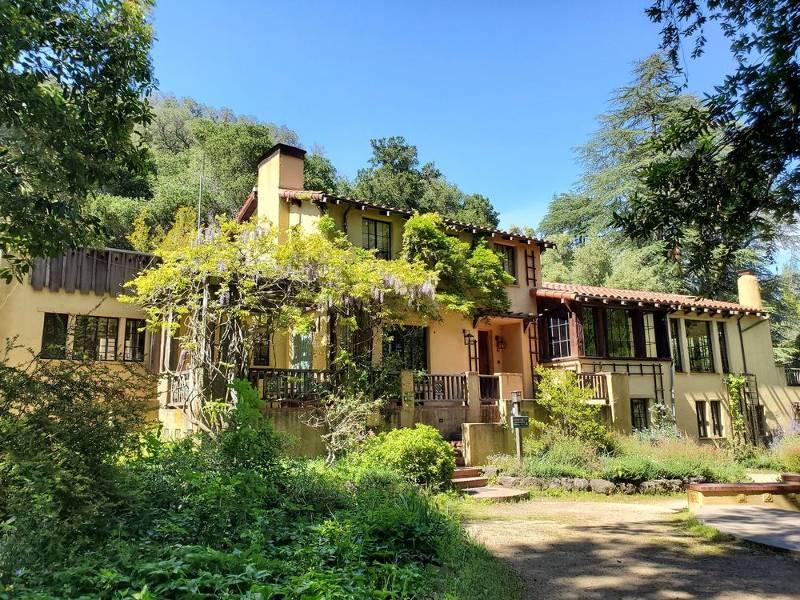
Hidden Villa, a California summer camp located near the Silicon Valley hub of Palo Alto has abruptly canceled its season earlier this month after counselors quit. The counselors had sent a letter to their supervisors protesting the presence of two wall tiles that depict swastikas, while a third tile depicts a lotus flower.
Camp director Philip James, who is Black, said at the time that he resigned “due to the organization’s failure to address issues of structural and institutional racism.” The specific reason cited was the camp’s failure to quickly remove the swastika tiles from the exterior of a building called Duvenek House, which is on the camp’s property. (San Francisco Gate)
The house was built in 1929, and the three tiles—each approximately 30 square centimeters—were incorporated into the design above a doorway during construction. According to a history of the land, activist Josephine Duveneck (1891–1978) was known for her passion for advancing social justice and used the Duveneck House as a center for her social activism.
The house was even a refuge for Jews during the Holocaust: “The Duvenecks sheltered refugees fleeing from the Nazis, assisted Japanese American families returning from internment camps, and hosted groups for social and educational reform,” the history guide notes. (J Weekly)
“These tiles were purchased by Frank and Josephine Duveneck while on their honeymoon in 1913 traveling through Asia,” Hidden Villa administration said. “It was brought to the community’s attention that the Buddhist symbols were experienced differently and some individuals experienced harm from their presence on the building.” (San Francisco Gate)
James lobbied for the removal of the swastika tiles prior to his resignation after a camper brought them to his attention in the summer of 2021. After voicing his concerns, James was asked to report the issue in writing.
“So I wrote a letter explaining my experience with the camper, and exactly what happened. At the end of it I said: ‘What are the other ways that we can be thinking about how to keep folks safe in this space?’” James said. “Leadership did not like that at all. I was reprimanded. They told me that I was making the Duvenecks look racist, and it wasn’t fair that they’re not here to defend themselves. . . . I think for me, honestly, that was probably the biggest turning point.” (Palo Alto Online)
Philip Arca, the camp’s interim executive director from January–June this year, said that he and other leaders were in conversation about potentially adding educational signs to inform campers about the history of the tiles. However, this did not resolve the issue.
In a letter delivered on 3 June, James and other staff members said in part: “We are not comfortable educating children in proximity to this symbol of hate.” It continued: “In its presence, we cannot purport to provide a safe or affirming environment. If you do not agree to meet these stated requests, the majority of the undersigned are currently prepared to terminate our employment.” (Palo Alto Online)
On 5 June, a meeting was held with Hidden Villa associate director Lynn Rivas and the authors of the letter, after which James resigned.
Two days later the tiles were removed. Hidden Villa board chair Peter Hartzell acknowledged that since the house’s construction in 1929, the swastika had evolved from a Buddhist and Hindu spiritual symbol to one representing Nazism.
Reflecting on the situation, Mimi Elias, a former camp director who had resigned, noted: “It took over nine months from when [the issue] was brought to their attention, to fast forward to this Sunday when everything just went down—it took them less than 48 hours to take them down, after a group of mostly white kids got together and expressed how it made them feel.” Elias added that James “had calmly and nicely tried to talk to them, meeting after meeting, but they just wouldn’t listen.” (Palo Alto Online)
The Hidden Villa administration stated in a letter posted online: “The resignation of our camp leadership team on 5 June, prior to the decision of the Committee on 6 June, put us in the position of making the difficult decision regarding camp.” The organization said: “It also highlights the need for the organization to continue to pause, reflect, and further develop plans of action to address the racial equity concerns shared by staff.” (San Francisco Gate)
Earlier this year a new California hate crime bill was introduced that differentiates between traditional Buddhist and Hindu use of the swastika and the Nazi emblem. The bill was supported by the Hindu American Foundation as well as Rebecca Bauer-Kahan, the state assembly member for the Lamorinda and Tri-Valley areas and a member of the California Legislative Jewish Caucus.
“I am pleased that we were able to create air-tight language that is sensitive to these important cultures while at the same time ensuring that those who seek to terrorize in anyway will be held responsible and prosecuted,” Bauer-Kahan said. (J Weekly)
For decades, Buddhists and others who hold the swastika to be a peaceful, centuries-old part of their religion, have found conflict in the US and elsewhere when creating or displaying the symbol.

Rev. Kenjitsu Nakagaki, a Japanese priest in the Jodo Shinshu tradition, has been on a quest to educate Westerners about the historical importance of the symbol, which long pre-dates the Nazi party.
After attending an interfaith gathering at which a hate crimes expert labeled the swastika a universal symbol of hate, he decided he must act. “This narrow and limited perspective is unacceptable for those of us who value and have grown up with the swastika in our religions and culture,” Nakagaki said in 2018, after the publication of his book The Buddhist Swastika and Hitler’s Cross (Stone Bridge Press, 2018). (Kyodo News)
The new language of the hate crimes bill in California states: “This legislation is not intended to criminalize the placement or display of the ancient swastika symbols that are associated with Hinduism, Buddhism, and Jainism and are symbols of peace.” (J Weekly)
Read more
Bay Area summer camp abruptly cancels all sessions over swastika controversy (San Francisco Gate)
Uproar over historical pre-Nazi swastikas forces Bay Area summer camp to cancel sessions (J Weekly)
Hate symbol or Buddhist emblem? Hidden Villa cancels summer camps for 1,000 kids after staffers resign over swastika tiles (Palo Alto Online)
Updated: Hidden Villa cancels all camps after key staff quit, citing structural racism (Los Altos Town Crier)
New CA hate crime bill differentiates Hindu swastika from Nazi emblem (J Weekly)
Japanese Buddhist out to educate West on swastika of good fortune (Kyodo News)
Related news reports from BDG
Japanese Monk Seeks to Shift Perceptions of the Buddhist Swastika
Los Angeles Buddhists Perform Silent Meditation Walk in Solidarity with Anti-Racism Activists
Dalai Lama Decries “Racism, Discrimination” Behind the Killing of George Floyd
American-born Indian Scholar of Ambedkarite Buddhism and Gender Equality Gail Omvedt Dies Aged 80
Places of Worship in Canada Eligible to Apply for New Anti-Hate Crime Initiative


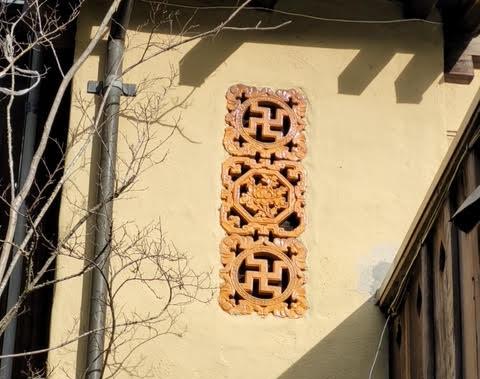





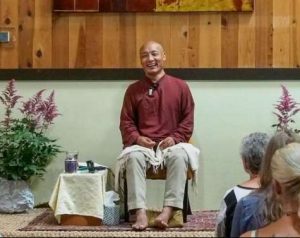
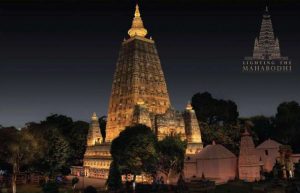

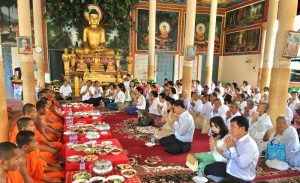


Interesting article. But no mention of whether or not the apparent difference between the 2 versions on the cover of the priest’s book is always the case throughout Hindu history. Secondly, I wonder if anti-any swastika people are the only narrow-minded people as the priest would have us believe. The swastika was appropriated by the Nazi party in Germany. It was their main symbol. It rightly is associated with the Holocaust in which some 6 million Jews were methodically murdered. Nazis murdered many millions of others as well, including the mentally ill, severely physically disabled, not to mention victims of their armed forces during prosecution of their war. Additionally, I would point out that the Buddhist priest cited in this piece is in a sect which cooperated with its military government which, wait for it, was “allied” with Hitler and his regime, along with Italy, in the so-called Axis. So, I wonder who is being narrow-minded and perhaps limited himself. He is quoted as saying that to not want this symbol on public display in the U.S. is “unacceptable”. I won’t even go into his callousness and perhaps anti-Semitic bias. I find it unacceptable that a Japanese man would demand that Jews and others get over it and get used to swastikas being part of our lives! What complete religious chauvinism and arrogance. He calls himself a Buddhist? My oh my.
The indian swastika precedes by a milennia de Nazi appropiation of it, being turned RIGHT by Hitler orders, while the original symbol turns LEFT. It means the solar rotation, the dynamics of life and nature, and we Buddhist respects and acknowledge that. With that explanation made it clear to anyone, it should be sufficient to assure that everybody also understand and respect that.
The Hindu/Buddhist symbol can be used in temples, homes and other facilities of religios import. But displaying them in public spaces in the United States where there is no context or explanation possible is simple calousness. Those who demand freedom of religion are doing so with absolutely no regard to the survivors of the holocaust and their families. You are being told point blank that the symbol strikes fear and sadness in the hearts of countless living beings and respond “but it is a nice symbol to us”. Real compassion.